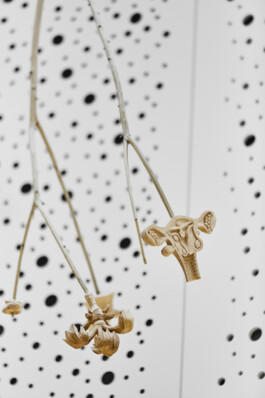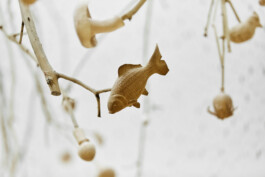Amoeba











Amoeba, Wilhelm-Hausenstein-Gymnasium, Munich, 2024; Photo: Studio Olaf Becker
Amoeba, Wilhelm-Hausenstein-Gymnasium, Munich, 2024; Photo: Studio Olaf Becker
Amoeba, Wilhelm-Hausenstein-Gymnasium, Munich, 2024; Photo: Studio Olaf Becker
Amoeba, Wilhelm-Hausenstein-Gymnasium, Munich, 2024; Photo: Studio Olaf Becker
Amoeba, Wilhelm-Hausenstein-Gymnasium, Munich, 2024; Photo: Studio Olaf Becker
Amoeba, Wilhelm-Hausenstein-Gymnasium, Munich, 2024; Photo: Studio Olaf Becker
Amoeba, Wilhelm-Hausenstein-Gymnasium, Munich, 2024; Photo: Studio Olaf Becker
Amoeba, Wilhelm-Hausenstein-Gymnasium, Munich, 2024; Photo: Studio Olaf Becker
Amoeba, Wilhelm-Hausenstein-Gymnasium, Munich, 2024; Photo: Studio Olaf Becker
Amoeba, Wilhelm-Hausenstein-Gymnasium, Munich, 2024; Photo: Studio Olaf Becker
Amoeba, Wilhelm-Hausenstein-Gymnasium, Munich, 2024; Photo: Studio Olaf Becker
Gabriela Oberkofler’s natural arrangement ‘Amoeba’ is located in an elliptical recess in the ceiling, through which light streams into the entrance hall of the Wilhelm-Hausenstein-Gymnasium. Widely ramified branches hanging upside down fill the entire air space. Carved natural parts are grafted onto the tips of the sturdier branches, merging with the branches to form a single unit: plant parts such as flowers or cones and animals such as birds, pig heads or snails. The surrounding wall of the dome-shaped ceiling opening is perforated with holes of different sizes for acoustic reasons. The irregular structure complements Oberkofler’s installation, which is perceived as an abstract interplay of lines. This can only be discovered by those who look around attentively and curiously and allow their gaze to glide over the walls that swing in and out up to the ceiling. The natural forms of the branches, the artistically designed sculptural structures and the architecture as an expression of human creativity and technical skills are in a dialogue that is only brought into relation with each other through the individual perception and movement of the viewer.
The branches used by the artist come from trees felled in the area of the park that had to make way for the construction of the secondary school. In the run-up to the construction project, there was an intensive dialogue with the surrounding residents about the integration of the school building into this natural space. Oberkofler has placed the issue of removing nature to create living and study space for the next generation at the centre of her concept for the secondary school, without making any judgements.
Her installation combines an aspect of reconciliation. By using the branches of the felled trees, she prolongs their existence in a different state – in this case as a work of art. This approach emphasises her respect for the trees, which she perceives as living beings. She sees them as part of a transformation process that also includes humans. Trees symbolise growth, the exchange of gases and oxygen. They are suppliers of raw materials, but also bearers of their own beauty.
Gabriela Oberkofler’s works are an expression of her reflections, which revolve around the relationship between man and nature. On the one hand, the artist illuminates the special characteristics of nature, but also its utilisation by humans. In this Kunst am Bau project, the remodelled branches assert themselves as art objects in the midst of the social interaction of a growing generation that will help shape the future of our society.
Dr. Eva-Marina Froitzheim, Curator Kunstmuseum Stuttgart
Material
Carved lime wood, 45 square metres in total, 74 branches with various carved objects
A project of QUIVID, the Art in Architecture Programme of the City of Munich
Amoeba











Amoeba, Wilhelm-Hausenstein-Gymnasium, Munich, 2024; Photo: Studio Olaf Becker
Amoeba, Wilhelm-Hausenstein-Gymnasium, Munich, 2024; Photo: Studio Olaf Becker
Amoeba, Wilhelm-Hausenstein-Gymnasium, Munich, 2024; Photo: Studio Olaf Becker
Amoeba, Wilhelm-Hausenstein-Gymnasium, Munich, 2024; Photo: Studio Olaf Becker
Amoeba, Wilhelm-Hausenstein-Gymnasium, Munich, 2024; Photo: Studio Olaf Becker
Amoeba, Wilhelm-Hausenstein-Gymnasium, Munich, 2024; Photo: Studio Olaf Becker
Amoeba, Wilhelm-Hausenstein-Gymnasium, Munich, 2024; Photo: Studio Olaf Becker
Amoeba, Wilhelm-Hausenstein-Gymnasium, Munich, 2024; Photo: Studio Olaf Becker
Amoeba, Wilhelm-Hausenstein-Gymnasium, Munich, 2024; Photo: Studio Olaf Becker
Amoeba, Wilhelm-Hausenstein-Gymnasium, Munich, 2024; Photo: Studio Olaf Becker
Amoeba, Wilhelm-Hausenstein-Gymnasium, Munich, 2024; Photo: Studio Olaf Becker
Gabriela Oberkofler’s natural arrangement ‘Amoeba’ is located in an elliptical recess in the ceiling, through which light streams into the entrance hall of the Wilhelm-Hausenstein-Gymnasium. Widely ramified branches hanging upside down fill the entire air space. Carved natural parts are grafted onto the tips of the sturdier branches, merging with the branches to form a single unit: plant parts such as flowers or cones and animals such as birds, pig heads or snails. The surrounding wall of the dome-shaped ceiling opening is perforated with holes of different sizes for acoustic reasons. The irregular structure complements Oberkofler’s installation, which is perceived as an abstract interplay of lines. This can only be discovered by those who look around attentively and curiously and allow their gaze to glide over the walls that swing in and out up to the ceiling. The natural forms of the branches, the artistically designed sculptural structures and the architecture as an expression of human creativity and technical skills are in a dialogue that is only brought into relation with each other through the individual perception and movement of the viewer.
The branches used by the artist come from trees felled in the area of the park that had to make way for the construction of the secondary school. In the run-up to the construction project, there was an intensive dialogue with the surrounding residents about the integration of the school building into this natural space. Oberkofler has placed the issue of removing nature to create living and study space for the next generation at the centre of her concept for the secondary school, without making any judgements.
Her installation combines an aspect of reconciliation. By using the branches of the felled trees, she prolongs their existence in a different state – in this case as a work of art. This approach emphasises her respect for the trees, which she perceives as living beings. She sees them as part of a transformation process that also includes humans. Trees symbolise growth, the exchange of gases and oxygen. They are suppliers of raw materials, but also bearers of their own beauty.
Gabriela Oberkofler’s works are an expression of her reflections, which revolve around the relationship between man and nature. On the one hand, the artist illuminates the special characteristics of nature, but also its utilisation by humans. In this Kunst am Bau project, the remodelled branches assert themselves as art objects in the midst of the social interaction of a growing generation that will help shape the future of our society.
Dr. Eva-Marina Froitzheim, Curator Kunstmuseum Stuttgart
Material
Carved lime wood, 45 square metres in total, 74 branches with various carved objects
A project of QUIVID, the Art in Architecture Programme of the City of Munich